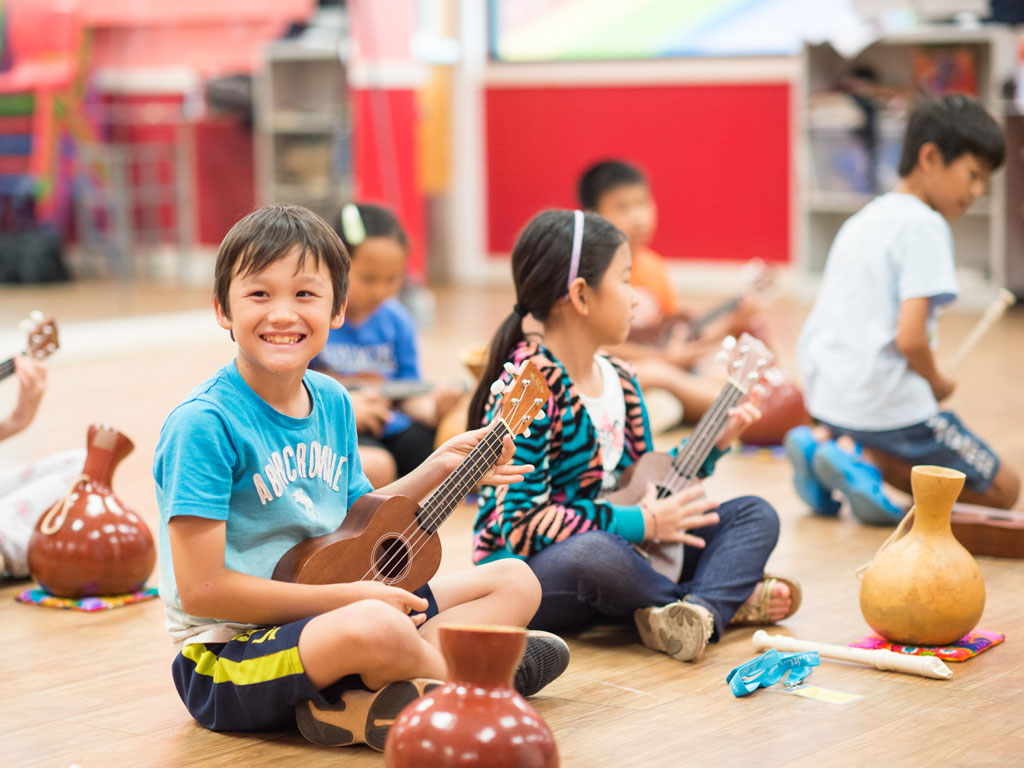by Susan Wright
Access to the arts can help to inspire lifelong learning and joy. Children that participate in forms of creative expression such as dance and music making strengthen a sense of self-confidence, and cultivate skills that are useful for success in school and throughout life, such as teamwork and focus. Performing arts education generates curiosity about, and engagement in, the world around us.
Local organizations long-dedicated to the enrichment of young people like Hawaii Youth Opera Chorus, Ballet Hawaii, and Hawaii Youth Symphony—see the transformative power of the arts in action every day.
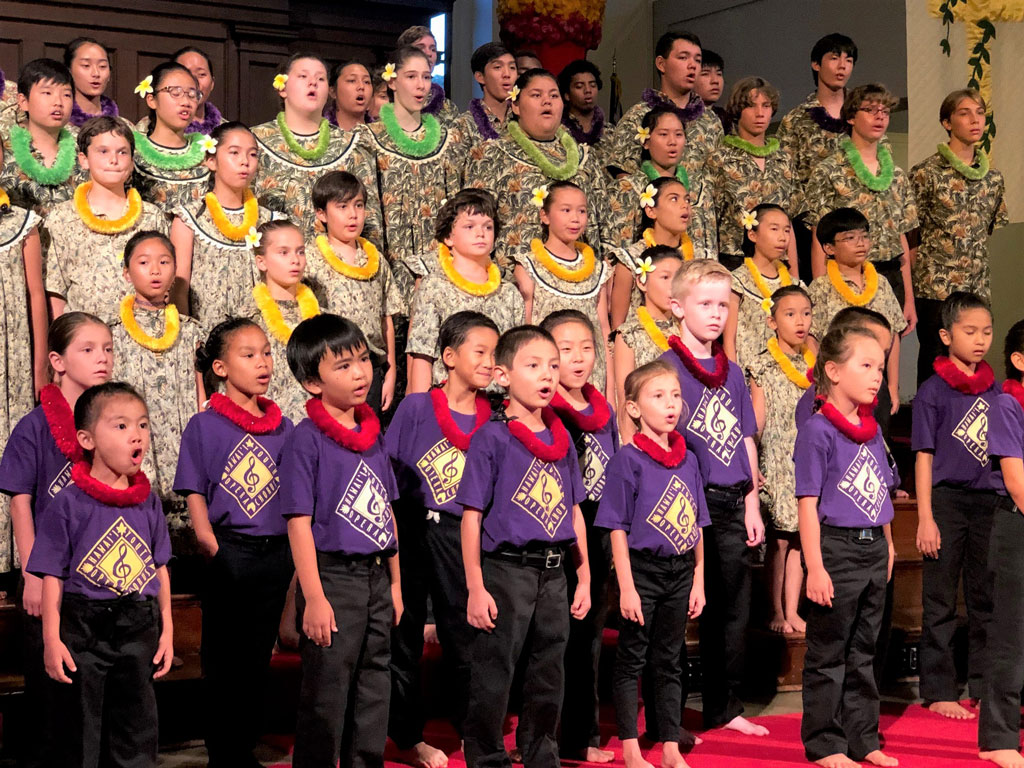
Hawaii Youth Opera Chorus is Hawaii’s longest running and most advanced community youth choir, offering a continuum of music education for grades K-12. Participants range from absolute beginners to some of Hawaii’s finest young vocalists. And with its welcoming environment and accepting approach to children from all different walks of life, HYOC is truly giving students a voice.
“Parents often come to us and say their child likes to sing, but they don’t have experience,” said HYOC General Manager, Malia Kaai-Barrett. “We let them know we meet students where they are. Each voice is unique and can be fostered. Pitch is a learned experience; pitch is a process. We don’t do auditions because we believe we can teach anyone to sing.”
The practice of choral music has cognitive, physical, and emotional benefits that can be imparted to every child, including those HYOC students that may have special needs, such as language and learning challenges. Kaai-Barrett likens group signing to something of a team sport, with students able to make real connections through the experience of training and building skills together. The structure of HYOC programs also encourages students to avoid developing cliques, and remain friendly and supportive of each other.
“Coming from public, private, and home schools, our students become friends with children from all over the island and these friendships endure,” shares Kaai-Barrett. “Our military families appreciate that there is an instant access to other kids and to culture through HYOC.”
Offering a large Hawaiian music repertory, HYOC students also are exposed to cultures from around the world and sing in a variety of languages. HYOC has cultivated relationships with numerous choirs both nationally and internationally, and welcomes musical exchange with other youth singers and visiting choral clinicians. The organization further creates unique OPERAtunities through its landmark youth opera program, commissioning operas composed specifically for youth performers, and all celebrating Hawaii-based themes.
Performance opportunities additionally extend throughout community concerts, celebrated international festivals, distinguished ceremonies, and alongside professional opera singers. “When Hawaii Opera Theatre needs child performers, they look to our organization. They know our students have training and poise, and that their behavior will be explementary. It’s a win-win situation.”
Through melody, friendship, and community, HYOC is fostering the personal and social growth of its students. “Parents tell us all the time that their children were shy before joining choir, and now they’re team leaders at school,” adds Kaai-Barrett. “There’s a process of sequential learning when we learn to sing, and the students naturally carry those skills into other aspects of their lives.”
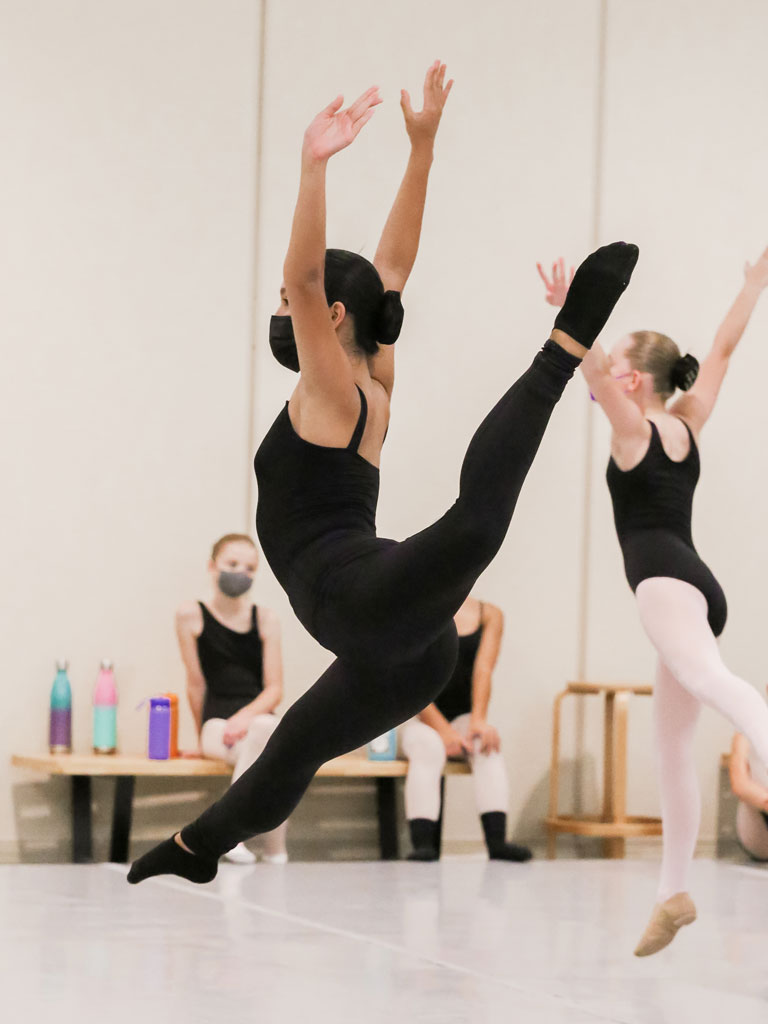
Ballet Hawaii offers classical ballet training for ages 3 and above, and contemporary dance for older students, with a mission to teach, present, produce and promote dance in Hawaiʻi. Part of what sets Ballet Hawaii apart as a dance school is that the organization regularly exposes students to the highest levels of professionals through its programs and productions.
The Summer Intensive program invites professionals from top dance companies in the nation to teach and also dance amongst students in a culminating performance. Ballet Hawaii’s The Nutcracker: Set in the Kingdom of Hawaiʻi in 1858 is an annual holiday tradition, where students try out and are placed in scenes alongside professional dancers in what becomes an experience of a lifetime. The popular production, infused with touches that distinctly celebrate a sense of place such as a snow scene set atop Mauna Kea, will make its return to the Blaisdell stage from December 2 – 4, after years away due to the pandemic.
“We believe in training the whole dancer’s mind, body and spirit,” said Ballet Hawaii Artistic Director, Pamela Taylor Tongg. “The discipline of ballet, we know, is not for everyone. The regiment of arriving on time, in uniform and committing to the practice creates a certain mindset. This mindset can take them beyond ballet into other areas that they can be successful in.”
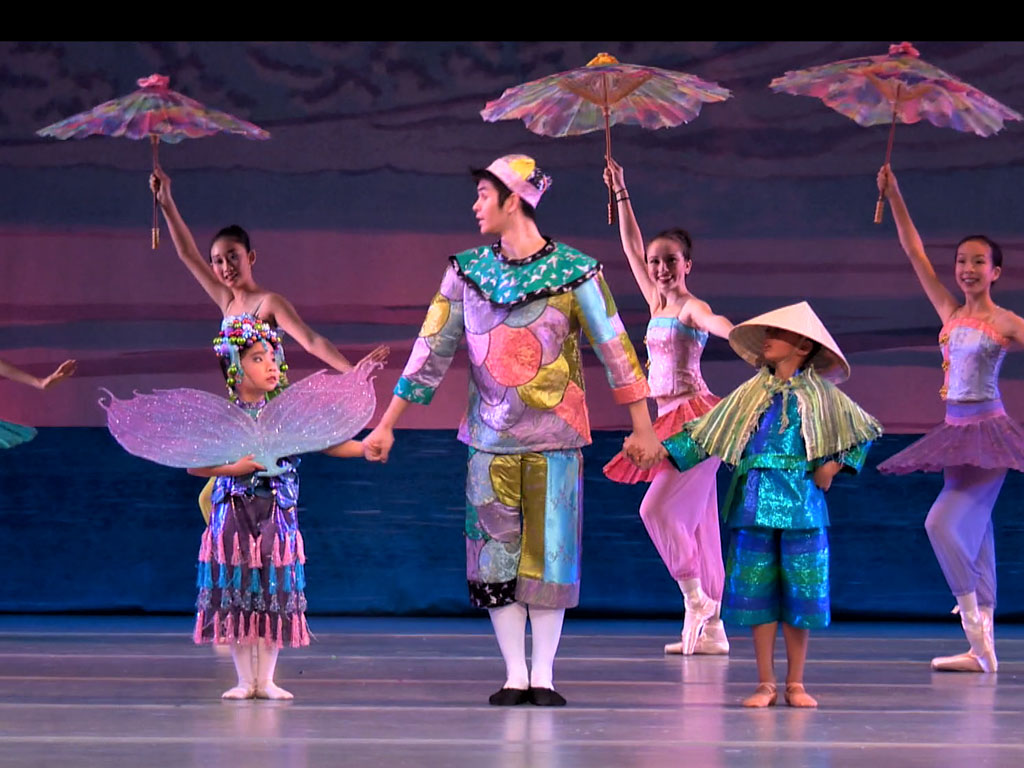
Ballet and dance serve as a basis for body posture, presentation, and exuding self-confidence. From the time they are first introduced to dance, Ballet Hawaii students are taught how to hold themselves high, smile brightly, and dance. “This is instrumental in developing the ability to perform under the hot lights of pressure—in any situation,” shares Taylor Tongg. “This teaches them that the world is their stage, and they are ready for anything life throws at them.”
Students start with a placement class, ensuring a more advance dancer isn’t assigned a class that will not stretch their ability—or conversely, a beginner isn’t placed in a setting that is too difficult, where they may lose confidence or are not learning solid basics to build upon. Younger students are also encouraged to attend and watch Ballet Hawaii’s selective Performing Ensemble when they perform in the community, gaining further inspiration to advance their own skills and artistry.
“The art of ballet naturally trains our bodies. The flexibility and athleticism to be en pointe and to lift another dancer high in the air takes muscles beyond belief. Additionally, the spirit of ballet is in the artistry, when we see our students express and interpret the music. It is one thing to mechanically perfect a move or pose, and it is another to emote it artistically. That is beauty in motion.”
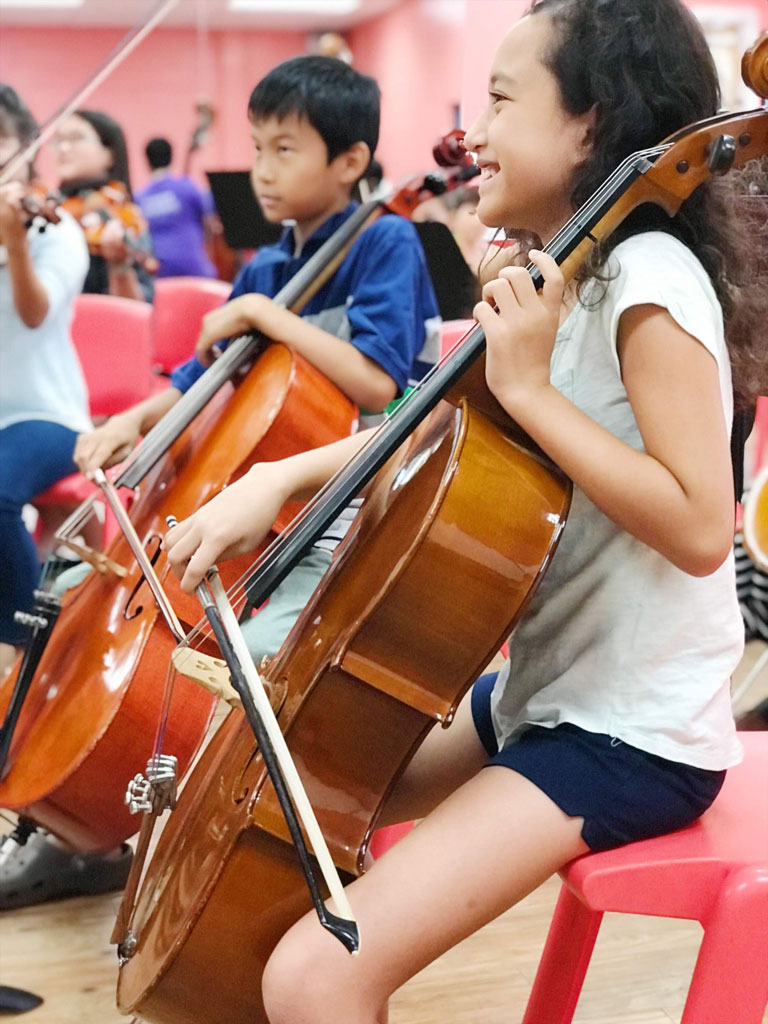
With a mission to develop youth to their fullest potential through orchestral music, Hawaii Youth Symphony promotes the importance of music study on academic achievement and social-emotional development. In the context of HYS, “orchestral” refers to ensemble playing, not necessarily classical music. Each year, students ages 7-18 from over 100 schools participate in HYS programs, spanning general music, string and band classes, jazz, its Pacific Music Institute summer music camp, and more. HYS’ most advanced orchestra, Youth Symphony I, is one of the finest youth symphonies in the country.
“A music ensemble is one of the best vehicles for social-emotional learning and well-being,” said Chad Uyehara, HYS Conductor and Academy String Program Director. “The introverted student learns to work with others and build friendships. The extrovert learns to listen to others, while still allowing their personality to shine. Students learn to balance both their musical voice and personality—knowing when to step into the foreground in a lead part, or when to support the lead by being backup. This is the essence of melody and harmony.”
Students also learn how to self-evaluate their own playing abilities and find ways to improve their skills. This constant cycle of identifying the problem, isolating the issue, and practicing through it helps students learn how to improve in anything they do. The experience also teaches resilience.
“No matter how hard you practice, sometimes you don’t get the result you were hoping for in a performance,” shares HYS Conductor and Programs Manager, Hannah Watanabe. “I talk with students about how they feel when that happens. Do we give up? Of course not! Are we disappointed? Yes, but what can we do? We can learn from the experience and try to figure out what we can do to ensure things go better next time.”
Nurturing the values of community service and leadership, HYS students are invited to share their love music through a variety of avenues. Performed ‘for youth, by youth,’ HYS Listen & Learn school concerts introduce children across the state to orchestral music, conducted in partnership with the Department of Education. Students are also given opportunities to perform with professional musicians. HYS’ annual He Makana O Nā Mele: The Gift of Music showcases the talent and dedication of HYS students as they perform with celebrated guest artists. Recently, the gala has been televised, inviting audiences to a musical journey in December that connects HYS students with music students in Japan.
HYS provides low-cost, entry-level classes with its Music in the Clubhouse program with the Boys & Girls Club, and partners with underserved communities to bring the benefits music-making to every child. Through its vision to Make Music A Right, HYS is creating an inclusive community for all students where music is the common language.


